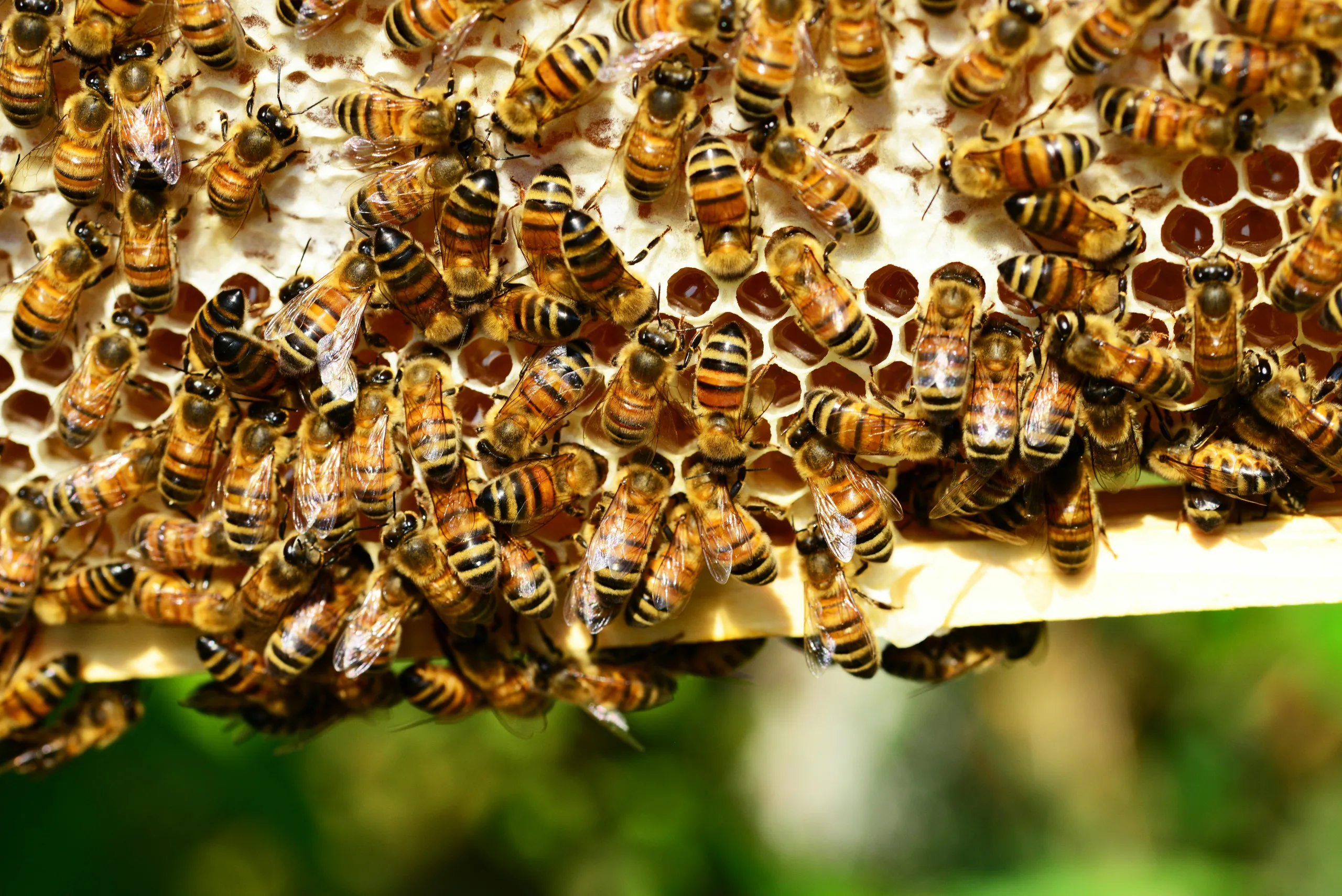Bees are important to man in so many ways. They pollinate a large proportion of the food we eat, then provide us not only with honey but a whole range of other products. Not all bees are the same either. Some are more suited to some localities than others. Different types produce different flavours in their honey. Some are stingless, then there are native bees in Africa, Australia and elsewhere that have their own unique characteristics. Beekeeping is a pastime that can be not only interesting but profitable, and certainly environmentally friendly. Through this course you can discover so much more about bees, beekeeping, honey production and using bee products.
How does it work?
At the end of each lesson, you will be given a short interactive test to undertake, which will provide an indication of how your learning is progressing. Upon completing the very last lesson, you will be offered a more thorough automated test or examination. This final assessment can be undertaken at any time of day or night; and any day of the week; and if you achieve an overall pass (60% or more); you will be able to obtain a “certificate of completion” with your name and completion date on it.
Note: these short courses are self-guided online courses and are not to be confused with tutor-supported online courses.
Bee Keeping Course Outline
There are 8 lessons as follows; with interactive self assessment tests to revise what you have learned at the end of each lesson.
Lesson 1: Scope and nature of bees and beekeeping
- Types – honey bee, Asian bee, bumble bee, Solitary bees, etc
- Significance of bees
- Legal restrictions
- Locating a hive – factors to consider
- Bee Taxonomy – different families
- Hive bees – Apidae family
- Types of Honey bee – including hybrids
- Bred bees
- Types of Stingless Bees
Lesson 2: Bee biology
- Bee physiology
- Exoskeleton, head, thorax, abdomen
- Life cycle
- Castes and their roles
- Queen
- Pheromones
- Other factors that trigger swarming
- Role of Royal Jelly
- Worker Bees
- Drones
- Nurse bees, Field bees
- How Bees Produce Honey
- Chemistry of Honey – proteins, amino acids, vitamins, minerals
- Bee Behaviour
Lesson 3: Equipment, materials, obtaining bees
- Obtaining bees
- To Catch a Swarm
- Buying in Bees
- Tools and Equipment – bee brush, blower, smoker, emlocks, escape board, queen catcher, queen muff, top feeder, spur wheel embedder etc., hive tool
- Bee proof suit
- Step by step honey extraction
Lesson 4: The Hive – types, construction, inspection
- The hive
- Lids
- Supers
- Bases
- Excluder
- Frames and Foundations
- Finishes
- Choosing the right Hive
- Langstroth Hive
- British National Hive
- Top Bar Hive
- Warre Hive
- Darlington Hive
- Straw Skep Hive
- Log Hives
- Keeping Stingless Bees
- Inspecting hives -step by step
Lesson 5: Working Bees: seasonal husbandry and harvesting
- Seasonal tasks – summer, autumn, winter, spring
- Feeding bees to Avoid Starvation
- Making a syrup
- How bees are Fed
- Dry Sugar
- How often to Feed
- Feeding bees Pollen Substitutes
- Moving Hives
- Reversing Brood Chambers
- Swarms
- Preventing a Swarm
- Bee Hive Cells -swarm, queen, worker and drone cells
- Drone Control
- Splitting Colonies
- Honey production
- Collecting and Processing
- Uncapping
- Wintering
- Collecting and Processing Beeswax
- Working with the different bee species
- Review what you have been learning
- Propolis Collection and Processing
- Apitoxin Collection and Processing
- Collection and Processing Royal Jelly
- Collecting and Processing Pollen
- Working with Different Bee Species
- Honey Production with Stingless Bees
Lesson 6: Bee Health Management
- Contributing Factors to Bee Health
- Indication of Health Problems
- Overview of Problems
- Pests
- Varroa Mites
- Acarine Mites
- Amoeba
- Bee Lice
- Wax Moths
- Wasps, other Insects and Larger Animals
- Diseases
- American Foulbrood, European Foulbrood
- Chalkbrood
- Small Hive Beetle
- Nosema Disease
- Viruses
- Other Problems
- Pest and Disease Control
- Quarantine and Hygiene
- Self Medication by Bees
- Supporting Bees
- Care with Pesticides and other Chemicals
Lesson 7: Bees in the Landscape
- Why Honeybees make Good Pollinators
- Native Bees
- Introduced Bees
- Wild or Feral Bees
- Helping Bees by Planting
- When are Honeybees Most Active
- Attracting bees to your garden
- How far will bees Travel
- Plants that Attract
- Dealing with Stings
Lesson 8: Using Honey and Bee Products
- Medicinal Uses for Honey
- Risks of Honey Use
- Uses for other Bee Products
- Beeswax
- Storing Honey
- Uses for Honey in Food
- Mead
- Cooking with Honey -salads, savoury, sweets and desserts
Final Assessment

